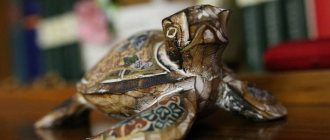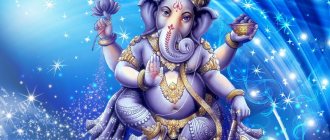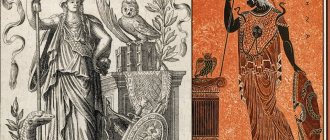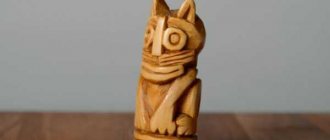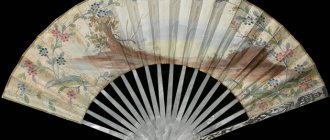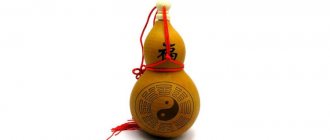Meanings and properties of the talisman
According to Feng Shui, the turtle represents a long happy life, health, wisdom, patience, endurance and the ability to see opportunities where others do not notice them. The animal helps hardworking and persistent people to slowly but surely and systematically advance in their careers. But the turtle will not help the lazy and weak-willed.
In addition to helping in business, the symbol also:
- Attracts good luck to the house.
- Prevents any kind of conflicts.
- Strengthens relationships between spouses, relatives, friends and colleagues.
- Promotes gradual and stable growth of well-being.
The image of an animal is of particular benefit to the head of the family. A home amulet attracts monetary luck to him and provides support in all endeavors.
Types of turtle figurines according to Feng Shui
On a handful of coins
A figurine made of gilded or silver-plated metal in the form of a turtle standing on a handful of coins patronizes ambitious people who want to achieve great success in their chosen field. The more the figurine weighs, the stronger its magical properties. The talisman can also be made of ceramics, porcelain, glass or crystal, but all these materials have much weaker energy compared to metal.
PDPics/Pixabay
Dragon turtle
This amulet is a creature with the body of a turtle and the head of a dragon. Sometimes there may be another turtle sitting on its shell. Symbolizes harmony in the universe and protects the home from negativity. The dragon turtle also favors leaders and anyone who wants to achieve a high social status. A bronze dragon turtle with a shell depicting ten thousand hieroglyphs of happiness attracts good luck in all areas of life.
"Longevity"
On the shell of such a turtle (usually black) is depicted the Chinese character Chow (Show), which means long life. The talisman helps fight various ailments, improves well-being, and increases mental and physical performance.
"Three Generations"
For a house under the roof of which several generations live, the “Three Generations” figurine is favorable. It is something like a pyramid of turtles: on the shell of the largest one there is a middle one, which holds the smallest one on itself. The amulet improves family relationships. The best place for it is the family zone (eastern part of the home). It is favorable to place the symbol in an aquarium - water enhances the energy of the talisman.
By the way, not only a figurine of an animal is effective as a talisman, but also any image of it, from a painting to a soft toy.
Feng Shui talismans and amulets
Amulets and talismans are a powerful means for individual protection of a person, solving his problems and achieving the desired goal. It is able to remove negative energy from its owner, remove the evil eye, and also attract good luck, good energy from other people, new acquaintances, success, vitality and vigor.
Of course, it would be naive to believe that with the help of amulets or talismans alone you can change your life, but the age-old power of the symbols that are depicted on them can protect its owner even in a terrible place, from the point of view of Feng Shui.
To activate an amulet or talisman, you need to concentrate and mentally put all the power of desire into it. When an amulet or talisman begins to work, stains, darkened areas, and dirt may appear on its surface that need to be removed. If used unreasonably, an amulet or talisman may “die.”
An amulet or talisman should hang on the neck of its owner, and after a wish has been placed in it, the owner needs to wear the amulet or talisman without taking it off for one or two weeks. Then you can hang it in your room at the entrance or carry it in your pocket.
The talisman is an individual symbol of the aspirations of its owner, therefore each talisman is unique in its own way. There are a myriad of symbols, diagrams and signs on it, and each serves a specific purpose and a specific person.
Thus, on a talisman with ancient writings, a symbol called “Perfect” is usually depicted in the center. It helps to develop comprehensively and ideally fulfill professional and family responsibilities.
The following symbols may also be depicted on the talisman:
- Fu - means happiness, good luck;
- Lu - prosperity, well-being, wealth and abundance;
- Shu - long healthy life;
- Shu Xi - double happiness, happiness for two;
- Tsai - wealth, money;
- He - harmony, peace and balance;
- Ai - love, passion, desire;
- May - beauty, charm, charm;
- G - good luck in everything.
The talisman with the gods depicted on it is protective and attracts the protection of heavenly powers.
A talisman with the image of all the heavenly gods helps to harmonize and normalize the flow of Qi, an excellent protector against negative energy coming from the sky, stars and evil spirits.
The symbol of Yin and Yang is a circle in which two figures with dots of opposite colors are inscribed. The black one with a white dot is a Yang symbol, the other is a Yin symbol. Points of opposite colors indicate that there is always a little Yang in Yin, and a little Yin in Yang. It should be noted that Yang and Yin are mutually constituent elements. They are not opposed to each other. Yin is the dark, passive and feminine principle. Yang - aggressive, masculine, light. Since ancient times, the Chinese have viewed the sky as the embodiment of Yang, and the earth as the embodiment of Yin. Together they create a harmonious whole. Therefore, Yin-Yang (one and indivisible) is a symbol of world unity, helping to unite all contradictions, strengthening vitality and spiritual balance in difficult situations.
The Phoenix Dragon talisman is a symbol of a happy marriage and a long married life. Since the dragon and phoenix are celestial creatures, the power of their protection is considered very great.
A talisman of fame is designed to bring honor and fame to its owner. The red color in which it is painted, in the Ba Gua trigram (an ancient octagonal symbol reflecting the four cardinal directions and the four intermediate directions), signifies glory. There are also other symbols of glory on this talisman. If you hang it at your workplace or around your neck, it will be much easier for you to gain fame and make new, interesting and useful acquaintances.
Buddha is one of the main gods in Chinese Buddhism and Feng Shui. In reality, the Buddha's name was Siddhartha Gautama. Siddhartha was a young prince who left his father's palace in his early youth around 560 BC. e. For seven years he tortured himself and studied sacred texts, and only by abandoning false wisdom, after long and deep concentration, he achieved sudden enlightenment and became a Buddha. This was the completion of the search for the truth, which he decided to convey to people. This is how Buddhism arose - one of the three world religions. From Ancient India, Buddhism gradually spread to the territory of China, Japan, Tibet, and the Arabian Peninsula. In China, Buddhism was modified under the influence of Taoism and Shintoism. Here Buddha is a god, and in Indian Buddhism, any of the brahmans, that is, sages seeking truth and enlightenment, can become Buddha. That's why in China Buddha is in the house.
Cats are known for their love of freedom, involvement in night walks and independence. Therefore, among feng shui animals, it stands out as the most mysterious creature. It is also a symbol of love for others and personal freedom.
The Chinese consider the rat primarily a symbol of wealth, prosperity and well-being. The rat must help the owners, arrange their life, make them more prosperous, and also accumulate money.
The toad brings wealth, longevity and immortality to its owners. Once upon a time she was very selfish and evil, but one day during his travels, Buddha, while traveling, touched a toad, and she ceased to be like that and turned into a bearer of qualities useful to all people. The toad is also a symbol of material wealth.
Elder Ai Tzu is a teacher of love, connects two loving people, and patronizes their happiness in marriage. It should be in a place where lovers spend a lot of time, for example, in their bedroom.
The dragon turtle is one of the main ancient Chinese magical animals with the head of a dragon. This is a unique symbol in the Universe. It is believed that it protects a person from the wrath of Prince Tai-Sui (planet Jupiter), who is the lord of the current year. The Chinese believe that the Grand Duke "Tai-Sui" likes to be looked at by the dragon turtle and is not angry with people. The dragon turtle of which corresponds to the location of the prince of “Tai-Sui” in a given calendar year. It is not recommended to make noise in this direction, make repairs or build there. Having two or three dragon turtles stare at the Grand Duke would only appease him more. Therefore, it is nice to have a figurine of three dragon turtles standing on top of each other.
The rooster is one of the main animals descended from the beginning of Yang. Therefore, it symbolizes courage and courage, and the crest on the head symbolizes a broad mind and the development of intellectual abilities. His natural agility endowed him with protective properties and made him a reliable patron over those for whom he feels favor. The Chinese believe that a figurine of a golden or red rooster can protect against fire and evil spirits during sleep.
The lion in feng shui is the most important animal. It has great strength, power and symbolizes honor, valor, energy, pride and wisdom. In feng shui, the lion comes from Buddhism, where it is considered a sacred protective animal. Sculptures of lions are found at the entrances to temples, and their images are used in colorful lion dance ceremonies to scare away demons and attract positive energy. But lions are best known as stone protectors, which is why they are placed at the entrance gates of temples and ceremonial houses. In Feng Shui, stone lions can also protect the entrance to the houses of ordinary people. They are placed both at the entrance and at the fence to prevent evil spirits from entering the house. In this way, the owners reliably protect themselves from evil spirits and negative influences.
A diary (notebook) serves to enable a person to conduct his or her affairs rationally and successfully. With the help of a notebook, he brings order to his personal feng shui and does not allow some important and positive matters to get lost in his memory. Also, a notebook will help ensure that none of the undertakings completely captures a person. Notebooks can be very different in shape, color, material from which they are made, and pattern. Each individual book must reflect the interests of its owner. It is advisable that the book be made of material corresponding to the horoscope sign of its owner. What many Chinese diaries have in common is that they are never made from materials such as plastic and polyethylene, which destroy a person’s personal feng shui.
Air bells (wind chimes) are not only a source of pleasant melody, but also a tool for attracting, aligning and stabilizing Qi. With proper and skillful placement, air bells are very good at correcting the flow of Qi, but only if the overall environment in the room is satisfactory. It is advisable to have air bells if your door is located opposite a window, another door or a corridor. There are many different types of air bells and their tubes: wooden, bamboo, iron, copper, with or without hieroglyphs. No matter what the wind chime is made of, it always transforms negative energy into positive energy, i.e. transforms Sha-Qi into Sheen-Qi. But the material from which this tool is made must correspond to its direction:
- metal bell - for the east and southeast;
- bamboo (wooden) bell - for the northeast and southwest;
- ceramic bell - for the north.
Incorrect placement of air bells can lead to an imbalance and confusion in the flow of Qi, which can lead to failure and disaster. Also, to protect the house from negative flows of Qi, you need to make sure that there are five musical pipes in the wind chime.
Pagodas (temple bells) symbolize the holiness of Buddhist temples and Tibetan monasteries. In Feng Shui, this thing came from Bingshan Mountain in Yuanlan. Pagodas are made in the shape of a bell, which helps transform negative energy into positive energy, bring it to any place, preserve and control it. Almost every home has rooms such as a pantry. You can reduce the negative impact of these rooms by hanging a pagoda in them. It also transforms the energy of any room that has an excess of Yin. Another property that pagodas have is that they attract help. Iron bells will help you in difficult situations. In especially difficult cases, their ringing will call to you the help that is necessary or desirable at the moment. The pagoda also promotes success in studies, career and gaining fame.
